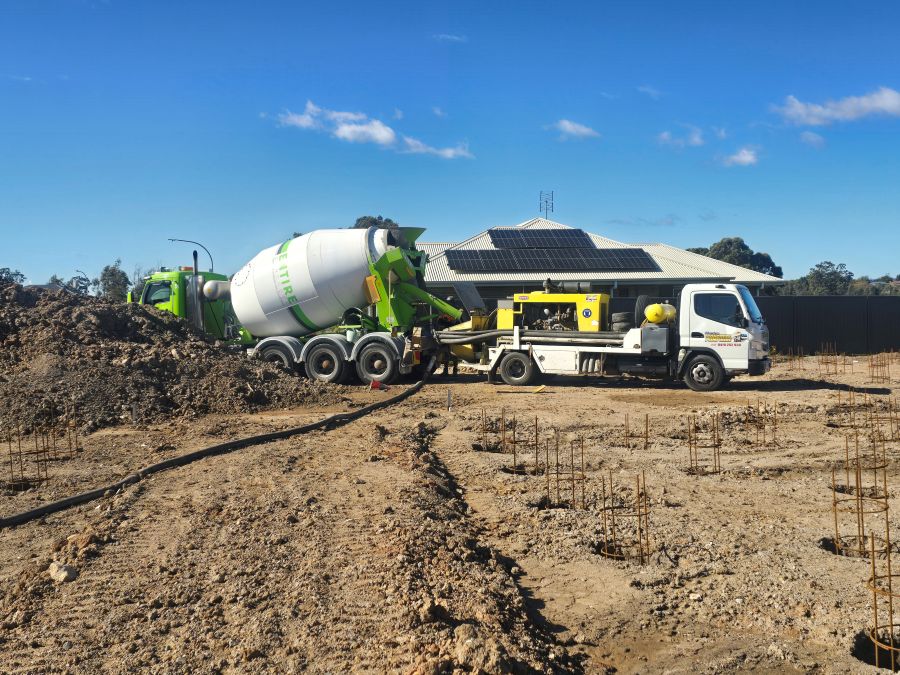Crucial Strategies for Ensuring Safe Concrete Pumping Practices in 2025
As we navigate the dynamic landscape of concrete pumping safety in 2025, it becomes essential to highlight the necessity of extensive training, rigorous equipment inspections, clearly specified exclusion zones, and diligent pre-start planning. Acknowledging and comprehending the inherent risks associated with concrete pumping is vital, as it directly impacts accident prevention and overall project success. By prioritising these safety measures, workers can cultivate a secure working environment that not only enhances operational efficiency but also significantly boosts productivity, ultimately setting the stage for successful project completion.

Recognising and Mitigating Common Risks in Concrete Pumping Operations
According to SafeWork NSW, operators and crew members engaged in concrete placement encounter significant challenges and potential hazards during the setup and operation of concrete pumps. These risks may encompass:
- Unstable ground conditions or improper setups on sloped surfaces, which can lead to catastrophic accidents.
- Utilising equipment that exceeds its design specifications, thereby increasing the likelihood of mechanical failures.
- Proximity to overhead power lines, which can pose severe electrocution risks.
- Collisions involving trucks, structures, or site personnel, resulting in serious injuries.
- Hose whip and line surges, which can create perilous situations if not managed effectively.
- Unexpected equipment failures and blockages that may disrupt operations.
- Exposure to crush zones, diesel fumes, and high noise levels, which can adversely impact health.
- Slip, trip, and confined space risks that could result in significant injuries.
These dangers are not mere theoretical concerns; they frequently materialise when safety protocols are neglected or inconsistently applied. Therefore, our commitment remains steadfastly focused on vital safety considerations at the worksite, ensuring that every crew member is thoroughly informed and adheres to established safety measures for a safer working environment.
1. Prioritising Training and Certification for All Team Members
Given that concrete pumps operate under high pressure, stringent operational requirements for operators are essential. In NSW, it is crucial that operators possess:
- An HR licence for operating boom trucks, confirming their qualifications and competence.
- Verified VOCs (Verification of Competency) to validate their skill levels and capabilities.
- Training in hazard recognition and a comprehensive understanding of emergency shutdown procedures.
Furthermore, hose handlers must undergo thorough briefings to ensure they refrain from standing in discharge zones and can swiftly identify blockages, which is vital for maintaining operational safety and preventing accidents. This approach not only reinforces the importance of training but also significantly enhances overall site safety and operational integrity.
2. Establishing Exclusion Zones to Fortify Safety Protocols
Concrete under pressure moves rapidly and poses an extreme risk if released unexpectedly. Therefore, it is critical to set up clearly marked safety zones surrounding the hose and boom at all times. Key safety measures include:
- Utilising barriers and flagging to define risk areas around the pumping operation.
- Prohibiting personnel from standing in front of the discharge area to avert injuries.
- Restricting movements beneath booms to mitigate the risks of accidents and protect personnel.
3. Performing Comprehensive Equipment Inspections Before Each Pour
Every concrete pumping operation commences with a meticulous equipment inspection. At Hunter Concrete Pumps, we conduct exhaustive checks on:
- Hoses and reducers to ensure they are in optimal working condition and devoid of defects.
- Couplings and clamps to guarantee secure and safe connections that prevent leaks.
- The integrity of the boom and seals to avert leaks that could lead to hazardous situations.
- Primer levels to ensure the pump operates smoothly and efficiently throughout the pour.
- Emergency shutoff systems to ensure immediate response capabilities in the event of an incident.
No operation commences without the pump successfully passing all inspections, reinforcing our unwavering commitment to safety and operational efficiency. This diligence is crucial for maintaining the highest safety standards on-site, ensuring a reliable working environment.
4. Designating a Lead Operator for Optimal Coordination
Effective communication is vital for the success of concrete pumping operations. Each crew must appoint one lead operator who is responsible for overseeing the pour and ensuring seamless coordination with:
- Agitator drivers to synchronise operations and guarantee a smooth pour.
- Hose handlers who expertly manage the flow of concrete in a safe and efficient manner.
- Site supervisors to ensure strict compliance with site regulations and safety protocols.
- Concreters and finishers to achieve the desired project results and quality.
This clear chain of command is essential for preventing errors and miscommunication, ultimately enhancing both the safety and efficiency of the operation. A well-coordinated team can significantly diminish the likelihood of accidents and improve overall project outcomes, contributing to a successful workflow.
5. Kicking Off Each Pour with a Thorough Safety Briefing
Before commencing the pump operation, it is crucial for the crew to discuss several essential topics, including:
- Site access and hose routing for optimal flow management and safety.
- Emergency response plans and first aid protocols to ensure preparedness for unforeseen incidents.
- Truck staging and washout procedures to maintain site cleanliness and orderliness throughout the operation.
- Identifying slip hazards and ensuring the appropriate use of PPE (Personal Protective Equipment) for every crew member.
- Defining the roles of spotters as necessary to further enhance safety and situational awareness.
At Hunter Concrete Pumps, we rigorously implement these protocols on every job, without exception, to guarantee the safety of our team and the integrity of the project. This unwavering commitment to safety is non-negotiable and integral to our operations, ensuring that every aspect is carried out with precision and care.
The Critical Importance of Safety in Concrete Pumping Operations
Ensuring safe concrete pours not only protects your crew but also safeguards your project timeline, budget, and reputation. A lapse in safety can lead to injuries, project delays, or regulatory scrutiny, which are risks that cannot be overlooked or taken lightly. We strictly adhere to the SafeWork NSW guidelines for concrete pumping on every job. Our operators are not only trained but also licensed and insured, ensuring that when you choose our services, you are selecting a provider that integrates safety into every aspect of the process.
Are Spotters or Safety Personnel Necessary for My Concrete Pour?
For civil and commercial job sites, the answer is unequivocally yes; spotters or safety personnel are essential for maintaining high safety standards. However, for residential projects, our dedicated pump crews are highly skilled in managing safety zones effectively, ensuring the site remains secure at all times. We will inform you of any specific requirements during the quoting process to ensure clarity and compliance with safety regulations.
What Are the Most Common Safety Risks Associated with Concrete Pumping Jobs?
The three primary risks include untrained hose handling, inadequate access planning, and the absence of exclusion zones. We proactively address all three of these critical issues before the concrete pour commences, ensuring a safer working environment for everyone involved in the operation. Our commitment to safety is paramount, and we take every measure to mitigate risks and uphold best practices.
Achieve Seamless and Safe Concrete Pours with Our Expertise
Concrete pumping safety is not merely about adhering to excessive regulations; rather, it focuses on ensuring that the job is completed without injuries or delays. When your team is well-versed in safety procedures and your operator arrives fully equipped and prepared, the concrete pour can proceed smoothly, efficiently, and without complications, paving the way for successful project outcomes. Our expertise in this field ensures that every aspect of the process is handled with the utmost care and professionalism, fostering a culture of safety and excellence.
Concrete Pump Hire
The Article: Concrete Pumping Safety Protocols: 2025’s Top 5 Tips first appeared on https://writebuff.com
The Article Concrete Pumping Safety Tips: Top 5 Protocols for 2025 Was Found On https://limitsofstrategy.com
The Article Concrete Pumping Safety: Essential Protocols for 2025 found first on https://electroquench.com

